London Chess Classic: First Half Recap
December 11, 2009 • General
Good morning to everyone from gloomy London. I must say that having spent time in Seattle and Vancouver, I have gotten fairly used to overcast days. However, the weather here seems to be a steady forecast of clouds followed by rain and then more rain later on. Luckily, I am here to play chess which does not require nice weather, THANKFULLY! Overall, though, I do like most of the chaps I have met during the tournament thus far. The organization has been first class, and I have had a good time. Now onto what everyone is interested in- the games.
In round 1 I had White against Chinese GM Ni Hua. In a slight surprise, Ni Hua chose to play the a6 slav. This variation seems to be in fashion once again as GM Vladimir Malakhov used it with a lot of success during his deep run into the semifinals of the Fide World Cup (he should be in the final). I chose to play the ultra slow 5.Bd2. The next few moves were pretty standard until we reached the following position.
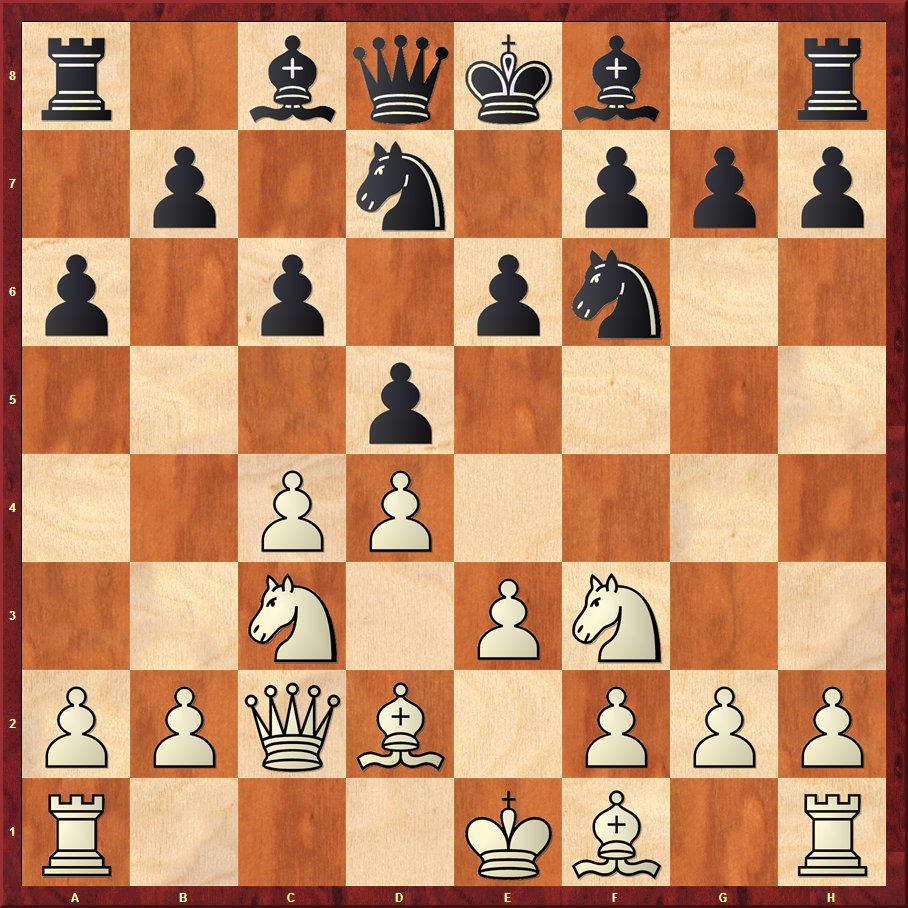
A) In the two previous times that this line was played against Ni Hua, he chose to play 7…c5 which led to razor sharp play after 8.cxd5 exd5 9.g4! which was played twice between Malakhov and Ni Hua in the Russia-China match earlier this year.
B) 7…Be7 is also playable, but White has a small edge after 8.e4 dxe4 9.Nxe4 Nxe4 10.Qxe4 c5 11.Bc3
C) 7…Bd6 8.e4 dxe4 9.Nxe4 Nxe4 10.Qxe4 c5 11.Bc3 with a similar position as in line B.
D) 7…dxc4 leads to a much different sort of middlegame struggle than the other three variations.
In the game, Ni chose to play 7…dxc4 and I had a small advantage until he went badly astray with with 18…Bf6 which allowed the nasty shot 19.Bd2-a5!
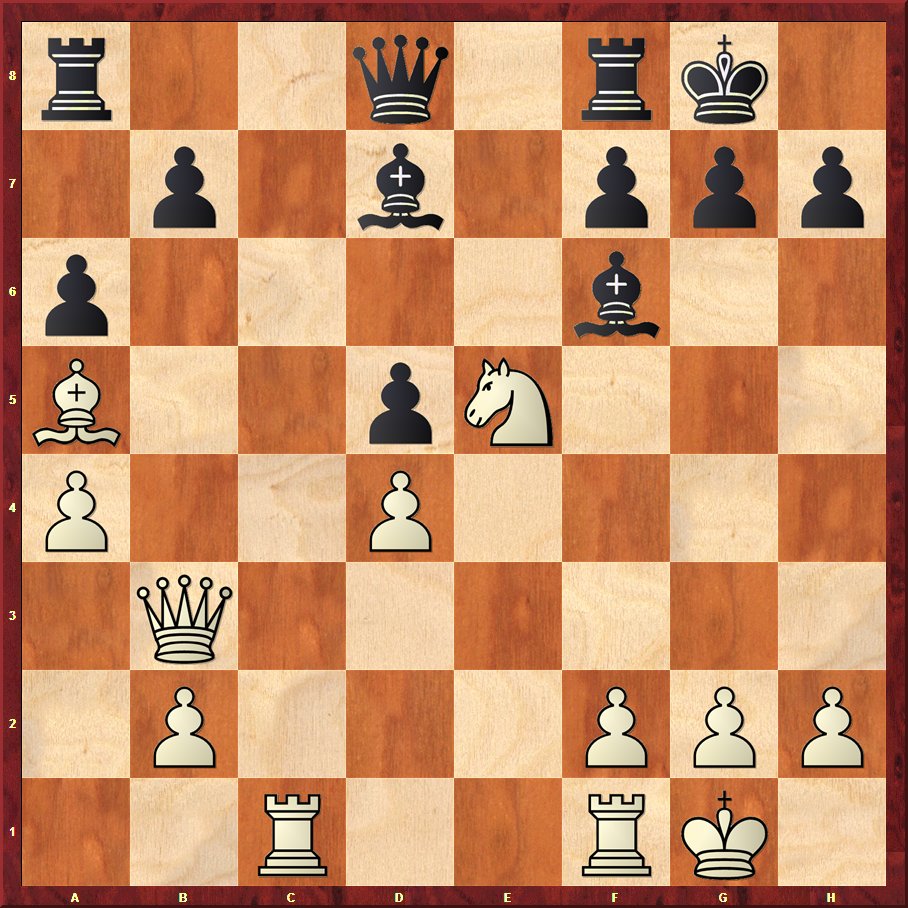
Clearly, Ni had missed this move as he started shaking his head profusely. I hardly blame him, as Black is probably very close to equal if not for this crushing move. After a forced series of moves, I had a significantly better endgame up an exchange. In a slightly dubious decision, I decided to give it back up and play a rook and pawn endgame up a pawn. Had Ni tried 36…Ke6 instead of Ke4, he probably would have had some good drawing chances. However, after 37.Rd7 I was clearly winning. Unfortunately, right before time control I completely hallucinated.
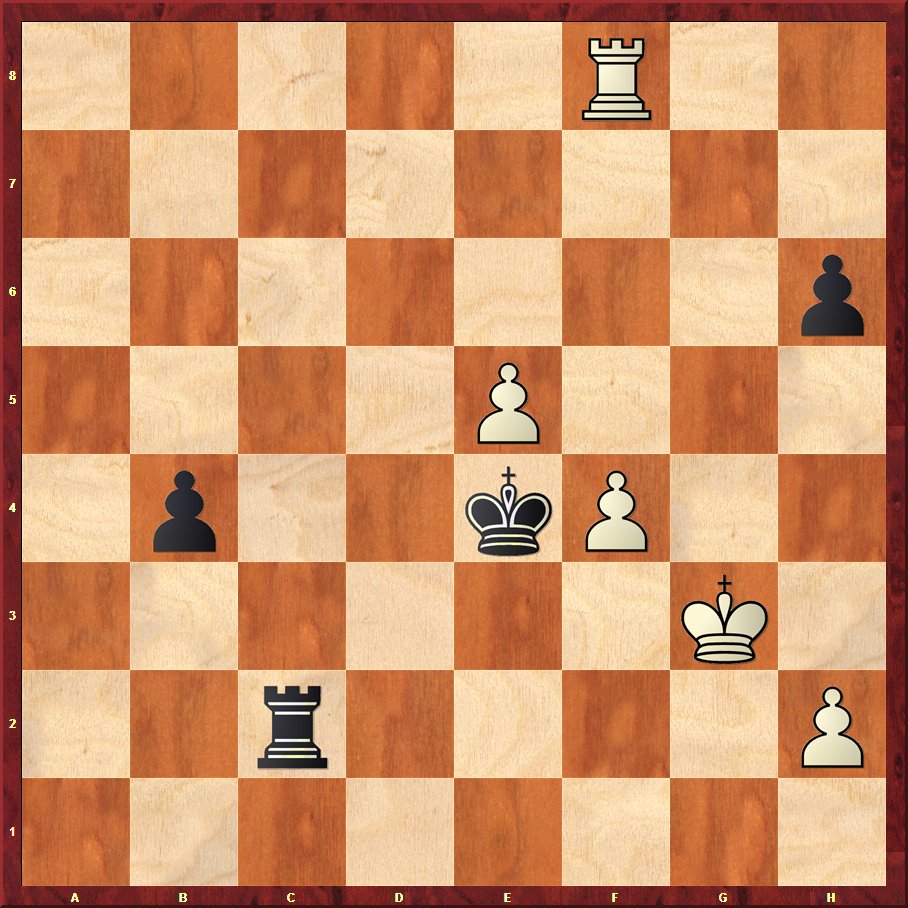
In the following position, I used up 35 of my final 40 minutes on this key position. For some odd reason, I calculated this ending correctly, but with one problem. I thought the pawn was on h5 not h6. One might wonder what difference does that make? I had foreseen 40.e6 Rc7 41.f5 Ke5 (41…b3 42.f6 b2 43.e7 b1=Q 44.e8=Q+ Kf5 45.Qh5 with a winning position.) 42.Rf7 Rc8 43.e7 Re8 (43…b3 loses to 44.Rf8) 44.f6 b3 45.Rf8 b2 46.f7! the whole point of this line. Now, with the pawn on h6 it is winning, but what did I see? I saw 46…Rxc7 47.Re8 b1=Q 48.Rxe7 Kd6 49.f8=Q Qg1+ 50.Kh3. This position is clearly winning as Black has NO CHECKS. However, if the pawn is on h5, neither Kh3/h4 are possible as Qg4 is checkmate. 50.Kf3/f4 also lose to Qf1 as I drop the queen on f8. I am not really sure what to chalk up this hallucination to, but alas it happens.
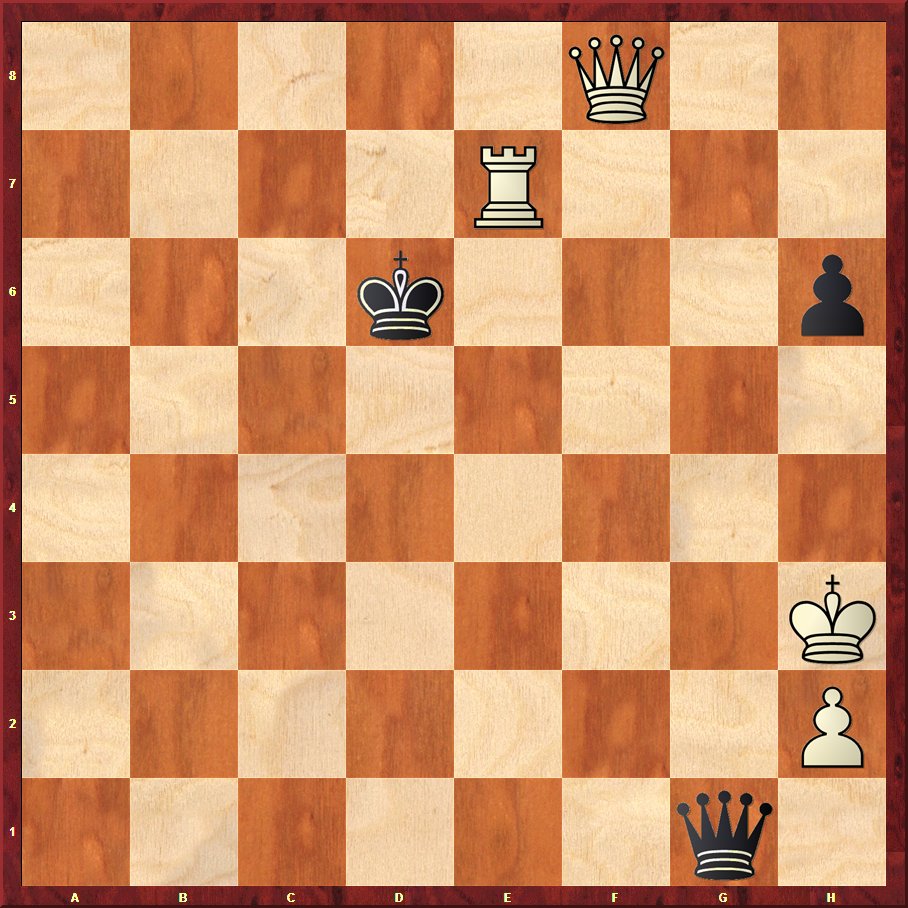
The rest of the game was not really noteable as Ni held without making any errors and it ended in a draw a few moves later. Overall, I felt it was a very good first round performance except for the ending.
In round two, I had black against British GM Michael Adams. I have only faced Adams twice with both games being way back in 2004 when I had a sensational run making it into the fourth round of the Fide World Cup in Tripoli, Libya. As the games were a very long time ago, I was unsure what to expect. Adams had been a top ten player for what seemed like an eternity. Recently, he seems to have had a few bad results which led to him falling below 2700 which seems a bit ridiculous to me.
I decided to trot out the French for the first time in a few years and Adams chose to play the Tarrasch. Shockingly, I believe this is the first time I have actually faced the Tarrasch in classical chess. I prepared the 3…Be7 variation. For some reason, I completely forgot about the game Adams-Caruana from the last olympiad. Instead of playing Nc7 followed by Nb8-c6, I chose the dubious plan of Nc7 followed by Qc8-a6. This was a rather careless choice on my part as it improves White’s queen position and takes my queen completely out of the game. The other huge problem it creates is that there are no concrete plans for Black while White just brings his queen over to the kingside and harrasses me with his knights. In the end, I had to go for the hideous plan of f5 which left me with a permanently backward pawn on e6 for the rest of the game. Fortunately for me, Adams could not find a clear way to put more pressure on the pawn and I was able to create complications.
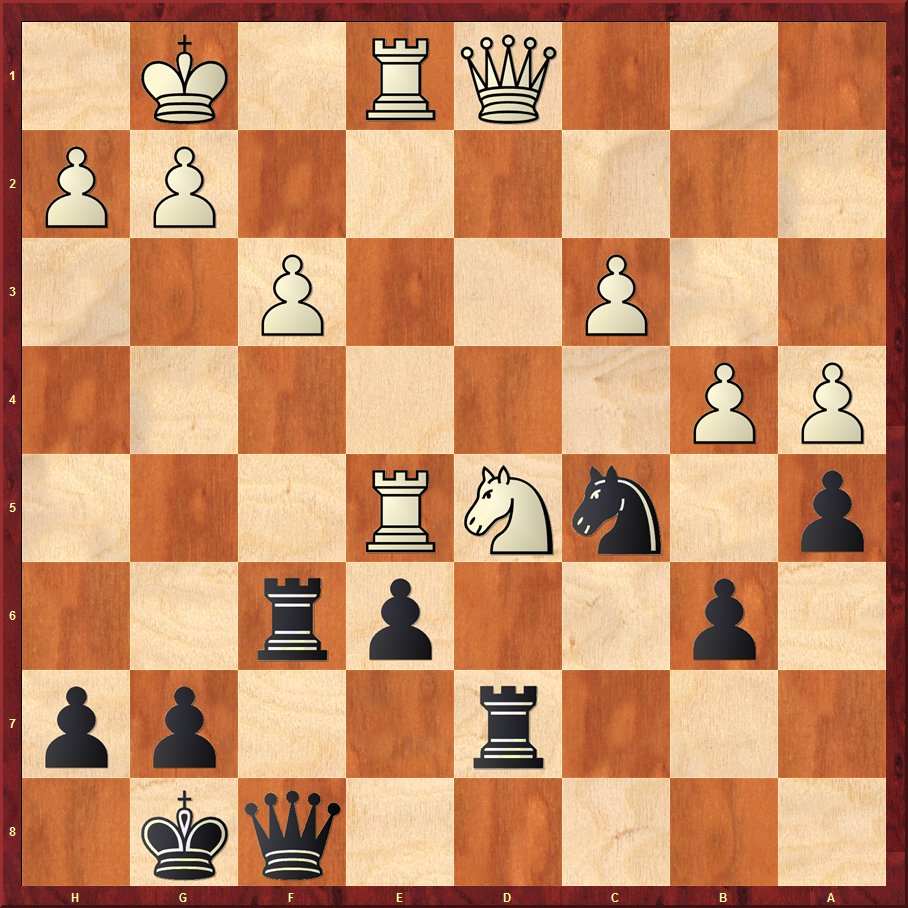
Here, I once again had a similar hallucination as in round 1.
A) 32…Rd8 was the best move in the position. After this, White has only a symbolic advantage after 33.Kh1 exd5 34.bxc5 Qxc5 35.h3.
B) 32…Rf7 33.bxc5 (33.Rxe6 is also possible, but White gets nothing after 33…Rd8! 34.Qb3 Kh8.) 33…Qxc5 34.Kf1 (34.Qd4 Qxd4 35.cxd5 Rxd5 36.Re5 Rc7! 37.Rxd5 Rc4 which is a drawn ending.) 34…Rxd5 35.Rxd5 exd5 36.Re5 h6 37.Qxd5 Qxd5 38.Rxd5 Rc7 with another drawn rook and pawn endgame.
C) 32…cxb4? Once again the incorrect decision. In fact, I thought that by trading on b4, I could reach a favourable version of line B above, but the problem is that after 33.cxb4 Rf7 White has the very strong 34.Qd4! which I completely overlooked. After 34…Rxd5 35.Rxd5 exd5 36.bxc5 Qxc5 37.Qxc5 bxc5 38.Re8 Rf8 39.Rxf8 Kxf8 40.a5! and I cannot prevent the a pawn from queening. Once I saw this disastrous line, I panicked and immediately went 33…Rd8? (33…Rf5 probably would have led to a draw after 34.Rxf5 Qxf5 35.bxc5 Rxd5 36.Qe2 [36.Qb3 bxc5 37.Qb5 Rd8 38.Qb6 Qd5 and White will eventually have to go into an endgame where I can trade the c pawn for the a pawn.] 36…Rxc5 37.Qxe6 Qxe6 38.Rxe6 Ra5 39.Re4 b5 where we reach a theoretically drawn endgame.) completely forgetting that after 34.Nxf6 gxf6 35.Qc2 fxe5 36.bxc5 that I did not have a pawn on g7 in this endgame! After this horrendous gaffe, I had to suffer in a losing rook and pawn endgame. Luckily, Adams butchered it quite severely and I got a miraculous draw.
Yesterday, I got my second White of the tournament against the olive farmer, aka Nigel Short. Short has had a resurgence over the last few years and is playing extremely well considering that he is 44 (ancient in chess years). The only other player who seems to have maintained such excellent form this late into their career is GM Boris Gelfand from Israel. Unfortunately, unlike most of the other players in this tournament, Nigel is rock solid and rarely takes risks when he is Black. Unlike the first two games, this one was much more balanced and I gained a space advantage out of the opening which was a Rubinstein Nimzo-Indian. Overall, I played pretty accurately although I did have one chance which both Nigel and I overlooked.
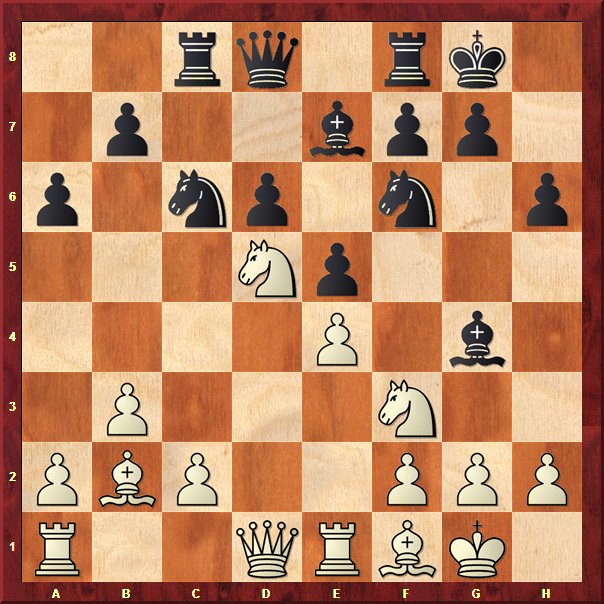
In this position, I chose 21.Be4, however, 21.d6! is much stronger. What we both overlooked is that after 21…Bxf3 22.dxe7 Qxe7 23.Re3 Bb7 24.Nd5! with the double threat of Nxe7 and Rxa3. Nevertheless, it is still very difficult to win after 24…Bxd5 25.Rxa3 Bc6 26.f3 b5. The rest of the game gave neither of many chances to create play. As such, a draw was a justified result. Or as Nigel would put it, “chess is a draw and the rules need to be changed.”
Overall, I cannot complain with the results other than the scoring system as I would have preferred a win and a loss since it would give me one more point! Right now, three draws is not what I would have wanted, but it is better than losing three games! For now, I am going to spend the rest day exploring Soho and getting ready for the game against Magnus tomorrow. Have a great day everybody!
Cheers,
Hikaru
London, 11.12.09


